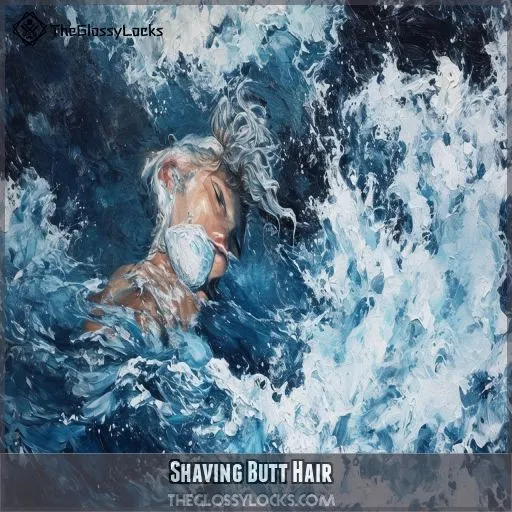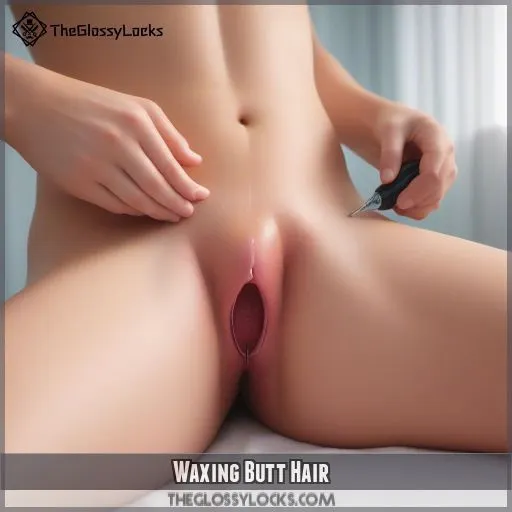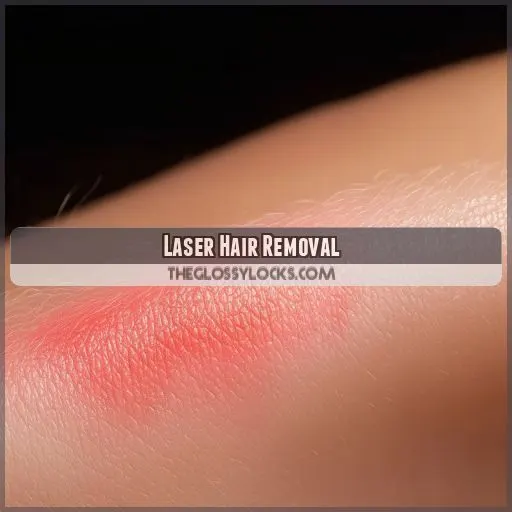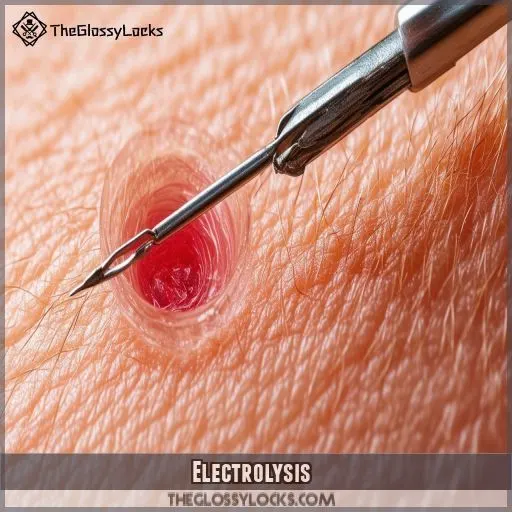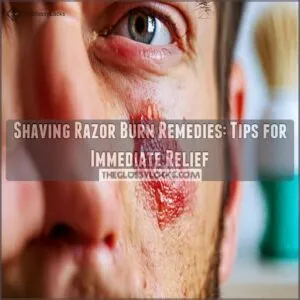This site is supported by our readers. We may earn a commission, at no cost to you, if you purchase through links.
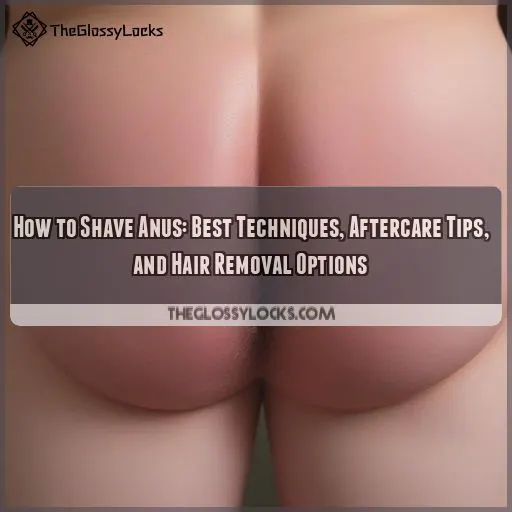 To shave your anus, start by trimming hair using scissors or an electric trimmer. Take a warm shower to soften the hair. Position yourself with a mirror for better visibility. Choose a good razor and shave in the direction of hair growth to minimize irritation.
To shave your anus, start by trimming hair using scissors or an electric trimmer. Take a warm shower to soften the hair. Position yourself with a mirror for better visibility. Choose a good razor and shave in the direction of hair growth to minimize irritation.
Rinse the area with cool water afterward and apply a gentle moisturizer to soothe the skin. Be cautious of razor burns and nicks. Proper technique and care are essential to avoid discomfort.
For further hair removal options and detailed methods, there’s much more to explore.
Table Of Contents
- Key Takeaways
- How to Shave Anus?
- Shaving Butt Hair
- Waxing Butt Hair
- Laser Hair Removal
- Electrolysis
- Risks and Side Effects
- Frequently Asked Questions (FAQs)
- Should you shave hair around the anus?
- Can I use Nair on my anus?
- Is it safe to wax anus hair?
- Does shaving bum hair reduce sweat?
- How often should I shave my anus?
- Can I use regular soap instead of shaving cream?
- Is it safe to shave while pregnant?
- How do I prevent stubble and prickliness after shaving?
- Should I shave in the direction of hair growth?
- Conclusion
Key Takeaways
- Slow and steady wins the race when it comes to hair-free cheeks. Start by trimming the area and hopping in a warm shower to soften those stubborn strands. Remember, Rome wasn’t built in a day, and neither is a smooth backside!
- Choose your weapon wisely – a good razor is your best friend in this delicate dance. Shave with the grain to avoid turning your tush into a war zone of razor burn and ingrown hairs. Trust me, your future self will thank you.
- Aftercare is where the magic happens. Cool water and a gentle moisturizer are like a spa day for your newly-shorn skin. Treat your derrière with the same TLC you’d give your face after a close shave.
- Don’t put all your eggs in one basket – there’s a buffet of hair removal options out there. From waxing to laser, each method has its own quirks. It’s like dating – you might need to try a few before finding "the one" that makes your heart (and bottom) sing.
How to Shave Anus?
To shave your anus safely, start by trimming longer hairs and using a clean, sharp razor with shaving cream in the shower. Gently shave in the direction of hair growth, rinse thoroughly, and apply a soothing aftershave lotion to prevent irritation.
Shaving Butt Hair
To begin shaving butt hair, you need to make sure proper preparation and use effective techniques for a smooth outcome. Aftercare is essential to prevent irritation, so following specific steps will help maintain skin health.
Preparing for Shaving
Preparing to shave your anus requires a few essential steps. Begin by trimming the hair with scissors or an electric trimmer. Next, take a warm shower to soften the hair and open your pores. Use a mirror to gain clarity and stability:
- Trim with scissors or electric trimmer
- Take a warm shower
- Use a mirror for clarity
- Prop leg up for taut skin
- Select the right razor
Shaving Techniques
To shave your anus effectively, follow these precise techniques. Use mirrors for visibility and prop up your leg to keep the skin taut. Make sure you’re in a bathtub for better control. Essential shaving supplies include:
- A bikini trimmer for trimming long hairs.
- A high-quality razor to smoothly shave without razor burn.
- Shaving cream for lubrication.
Always shave in the direction of hair growth to avoid pimples and ingrown hairs.
Aftercare
After shaving your butt hair, follow an aftercare routine to prevent skin irritation and ingrown hairs. Apply soothing, fragrance-free moisturizer. Avoid tight clothing that may rub against your skin. Exfoliate regularly to prevent ingrown hairs. If you notice razor burn on your bum, treat it with aloe vera or aftercare lotion. Cleanse and hydrate to avoid pimples on your bum.
- Moisturize
- Avoid tight clothes
- Exfoliate
- Treat irritation
- Cleanse and hydrate
Waxing Butt Hair
To wax butt hair, you need to prepare properly by cleaning the area and ensuring the hair is the right length. During the waxing process, apply the wax carefully, pressing strips firmly and pulling them off quickly.
Preparing for Waxing
Before your waxing appointment, it’s imperative to properly prepare your skin. Start by exfoliating the area 24-48 hours prior to remove any dead skin cells and allow the hair to be easily removed from the root. Additionally, consider taking an ibuprofen 30-60 minutes before your appointment to help reduce any potential discomfort or skin irritation.
- Exfoliate the area 24-48 hours before your appointment to remove dead skin cells.
- Take an ibuprofen 30-60 minutes before your appointment to help reduce discomfort or skin irritation.
- Avoid shaving or using hair removal creams in the days leading up to your waxing appointment.
The Waxing Process
For waxing butt hair, precision is key. A technician applies wax in the direction of hair growth. They use hard or soft wax based on sensitivity.
- Cloth strips: Pressed onto wax and removed against hair growth.
- Hard wax: Ideal for sensitive areas, reduces discomfort.
- Waxing duration: Typically 30 to 60 minutes, varying by hair thickness.
Expect some waxing discomfort, but results last longer than shaving. Avoid hot showers, saunas, and exercise for 24 hours post-waxing to minimize side effects. Waxing preparation is minimal compared to other methods like laser removal or depilatory creams.
Laser Hair Removal
Laser hair removal offers a long-term solution to managing butt hair by reducing its growth. To prepare, make sure the area is clean, shaved, and avoid sun exposure before the procedure.
Preparing for Laser Hair Removal
To prepare for laser hair removal on your intimate area, there are a few key steps to take.
First, avoid sun exposure for 4-6 weeks before your appointment, as this can increase the risk of complications.
Next, shave the area 24-48 hours prior to your treatment to make certain the laser can effectively target the hair follicles.
Finally, steer clear of waxing, plucking, or bleaching the hair for at least 4 weeks beforehand. This allows the hair growth cycle to stabilize for best results.
The Laser Hair Removal Process
Once prepped for laser hair removal, expect a straightforward process. Your dermatologist will use a laser device to target and damage melanin in the hair follicles. Here’s a step-by-step guide:
- Application: A cooling gel is applied to your skin to minimize discomfort.
- Treatment: Laser pulses are delivered to hair follicles, producing a mild stinging sensation.
- Cooling: Post-treatment, a cooling device may be used for comfort.
- Aftercare: You’ll need to avoid sun exposure and apply soothing creams.
Keep in mind, results vary, and multiple sessions are needed for satisfactory results. Maintenance sessions might be required.
Electrolysis
To prepare for electrolysis, make certain the area is clean and dry. During the process, a trained professional will use an electric current to eliminate hair growth, requiring multiple sessions for effectiveness.
Preparing for Electrolysis
Getting ready for electrolysis? Start by researching electrolysis cost and finding a skilled technician. Avoid sun exposure and tanning to prevent skin irritation. Stop using any hair removal methods that pull hair out by the roots at least two weeks prior.
| Preparation Step | Description |
|---|---|
| Research Technician | Find a certified professional |
| Avoid Sun Exposure | Prevent skin irritation |
| Stop Plucking/Waxing | Two weeks before treatment |
| Skin Cleansing | Cleanse area before appointment |
| Hydrate Skin | Keep skin moisturized |
Understand electrolysis long-term results, duration, and side effects before committing.
The Electrolysis Process
In electrolysis, a fine needle is inserted into each hair follicle. An electrical current is then applied to destroy the follicle, leading to permanent results:
- Preparation: Make sure the skin is clean and dry. Consider starting with smaller areas.
- Application: Each follicle receives an electrical current, causing follicular damage.
- Aftercare: Expect redness and tenderness. Apply soothing lotions as directed.
Side effects can include minor discomfort, redness, and possible infection. Using a trained professional minimizes risks. Electrolysis greatly reduces hair over multiple sessions, providing a long-term solution for hair reduction around the anus.
Risks and Side Effects
Shaving and waxing can both introduce risks and side effects, including irritation, ingrown hairs, and infection. It’s essential to understand these potential issues to take necessary precautions for safe hair removal.
Shaving
Shaving can be an effective, albeit temporary, solution for personal hygiene practices around the anus. However, it comes with risks and side effects.
- Razor Burn: Irritation from shaving can cause burning sensations. Use aftercare lotion or aloe vera to soothe.
- Ingrown Hairs: Hair can curl back under the skin, causing painful bumps. Avoid shaving over these areas until healed.
- Nicks and Cuts: Skin in this region is sensitive. Shaving with caution is essential to prevent bleeding and subsequent infections.
For those exploring shaving alternatives, understanding hair growth patterns and personal preference for aesthetics can guide your method of choice.
Waxing
Waxing offers a longer-lasting alternative but comes with its own risks and side effects. Be ready for some discomfort, as waxing can be painful. The process involves applying hot wax to the hair, then quickly removing it, pulling the hair out by the roots. This can cause:
- Redness: Your skin might appear red and inflamed immediately after.
- Swelling: Temporary swelling is common, particularly in sensitive areas.
- Infections: Open hair follicles can be prone to infections if not properly cared for.
Effective aftercare, including keeping the area clean and using soothing lotions, can minimize these risks.
Frequently Asked Questions (FAQs)
Should you shave hair around the anus?
You don’t have to shave your anus hair. It’s a personal choice with pros and cons. If you decide to, use caution to avoid irritation or cuts. Consider trimming instead for a less risky option.
Can I use Nair on my anus?
You shouldn’t use Nair on your anus. It’s not designed for sensitive areas and can cause severe irritation or chemical burns. Stick to gentler hair removal methods like trimming or carefully shaving with a razor designed for sensitive skin.
Is it safe to wax anus hair?
Waxing your anus can be safe when done by a professional. It’s more painful than other areas but lasts longer than shaving. Be aware of potential risks like irritation or infection. Always discuss any concerns with your esthetician beforehand.
Does shaving bum hair reduce sweat?
Shaving your bum hair won’t notably reduce sweat. While it might make you feel less sweaty temporarily, hair actually helps wick moisture away from your skin. Consider other methods for managing sweat if it’s a concern.
How often should I shave my anus?
You’ll want to shave your anus every 3-5 days, depending on hair growth. It’s important to maintain hygiene and avoid irritation. Listen to your body and adjust frequency as needed. Don’t overdo it – less is often more!
Can I use regular soap instead of shaving cream?
Are you ready to take the plunge? While regular soap can work, it’s not ideal. You’d be better off using shaving cream or gel. They provide better lubrication, reducing irritation and the risk of nicks or cuts.
Is it safe to shave while pregnant?
You can shave while pregnant, but take extra care. Your skin may be more sensitive, and it’s harder to see. Use a clean, sharp razor and gentle shaving cream. Consider trimming instead for safety.
How do I prevent stubble and prickliness after shaving?
Like smoothing sandpaper, preventing stubble requires finesse. Exfoliate before shaving to remove dead skin. Use a sharp razor with shaving cream. Moisturize after to soften regrowth. Consider hair removal creams or waxing for longer-lasting smoothness.
Should I shave in the direction of hair growth?
Yes, shave in the direction of hair growth to minimize irritation and ingrown hairs. Go slow, use light pressure, and keep skin taut. For a closer shave, you can carefully go against the grain afterwards.
Conclusion
Coincidentally, as you’ve learned how to shave your anus, you’ve gained valuable knowledge about various hair removal methods. Whether you choose shaving, waxing, laser hair removal, or electrolysis, each option has its pros and cons.
Remember to prioritize safety and hygiene throughout the process. By following proper techniques and aftercare, you can achieve smooth results while minimizing risks.
Ultimately, the best method for you depends on your comfort level, budget, and desired outcome. With this guide, you’re equipped to make an informed decision about managing your anal hair.

